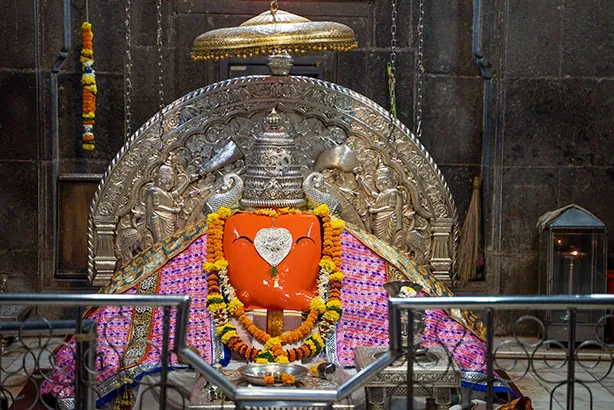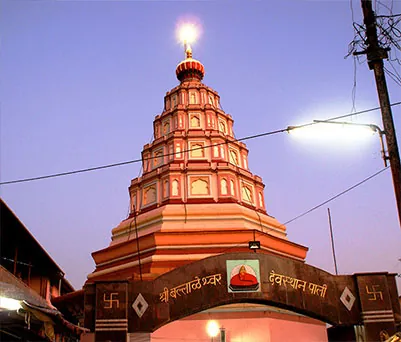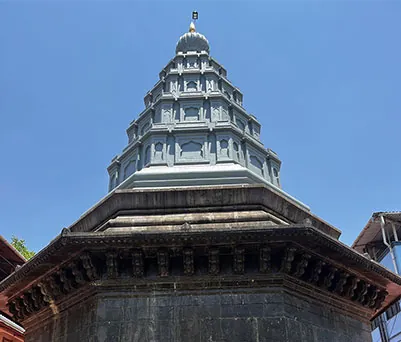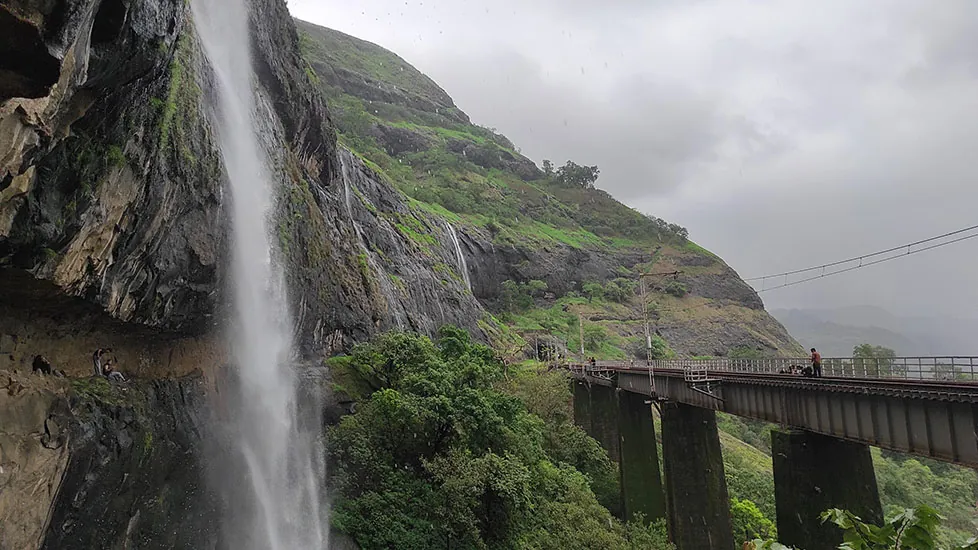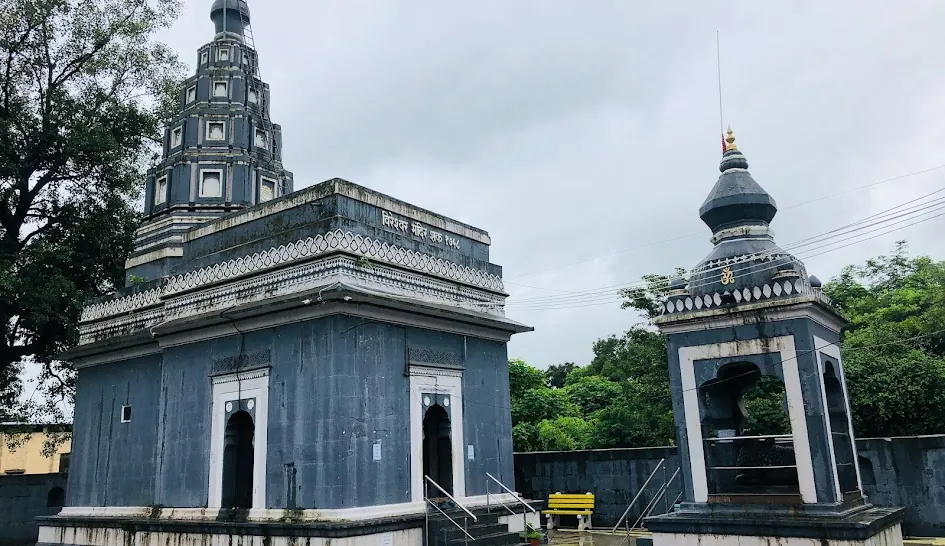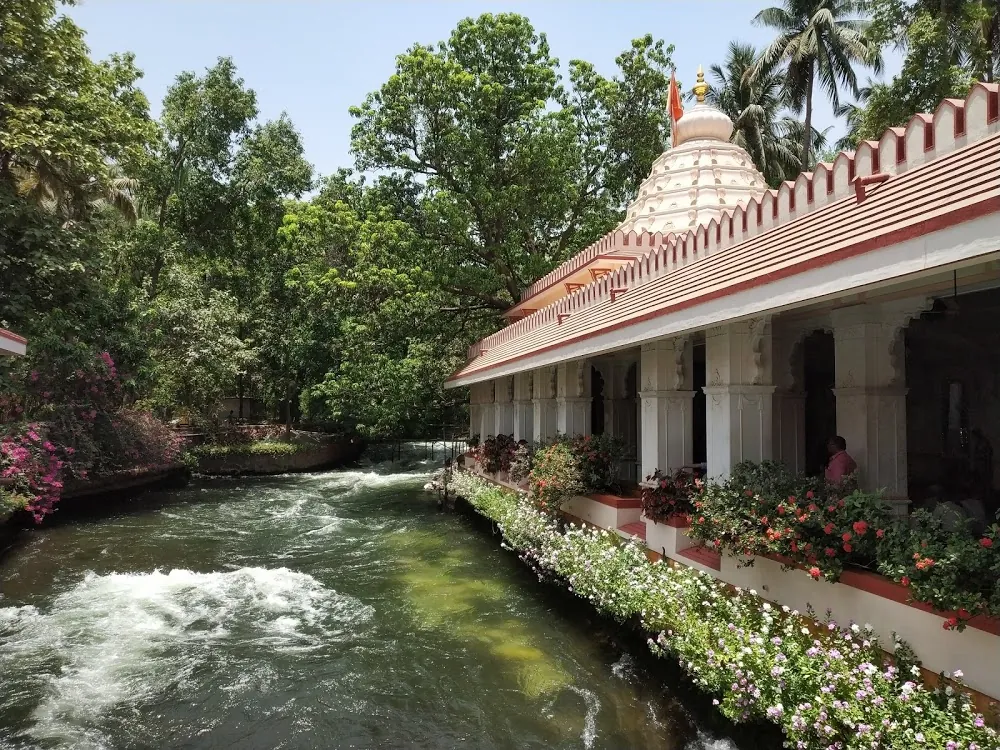The Legend of Ballal and the Birth of Ballaleshwar
This temple's soul lies in its story.
Centuries ago, a young boy named Ballal from Pali worshipped Lord Ganesha with such intensity that it drew divine attention. When villagers punished him for his devotion, Ganesha appeared in person to bless Ballal and granted him an eternal wish: to remain in Pali as Ballaleshwar—the Lord of Ballal.
This rare instance of the deity being named after the devotee makes this temple a powerful symbol of pure-hearted worship.
An Architectural Homage to the Sacred 'Shri'
The temple's design is a physical expression of reverence. Built in 1640 and later renovated in 1760, it blends symbolic geometry and divine engineering.
Key Features:
- Sacred Shape: Built in the form of the 'Shri' (श्री) symbol—a rare architectural statement of spiritual intent.
- East-Facing Orientation: Designed to allow the morning sun's rays to touch the idol directly, lighting the sanctum in divine glow during select days.
- Double Sanctums: The inner sanctum rises 15 feet high, while the outer stands at 12 feet, enhancing both spiritual energy and architectural depth.
- Main Hall: 40 feet long and 20 feet wide, the hall is supported by eight cypress-shaped pillars, symbolizing resilience and grace.
The Ballaleshwar Idol: Stillness Cast in Stone
The idol is not just worshipped - it's revered for its symbolism and stunning detail.
- Carved from a Single Stone: The deity's form is smooth and serene, emanating a calm energy.
- Diamond Accents: The idol is studded with diamonds in the eyes and navel—symbolic of inner clarity and cosmic connection.
- Trunk Tilted Left: A traditional sign of auspiciousness and tranquility.
- Flanked by Riddhi and Siddhi: These female deities represent prosperity and spiritual power.
Before entering, devotees bow to Dhundi Vinayak - a swayambhu (self-manifested) idol believed to be the original stone worshipped by Ballal. This reinforces the temple's legacy of living devotion.
Ashtavinayak Significance: Third in the Sacred Yatra
Among the eight Ashtavinayak temples, Ballaleshwar holds the third position, but its emotional gravity is unmatched. It is:
- The only temple where Ganesha is named after a human
- A vital stop in the pilgrimage circuit of divine self-discovery
- A place where the divine bows to devotion
